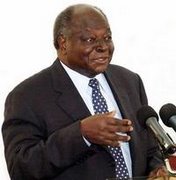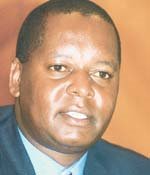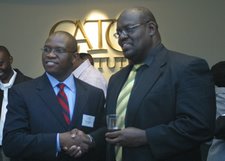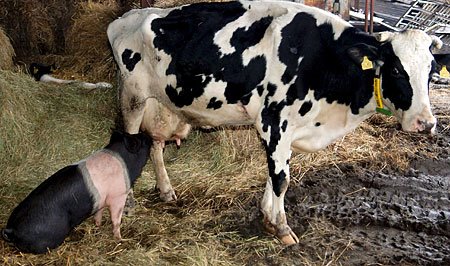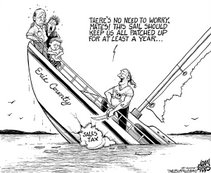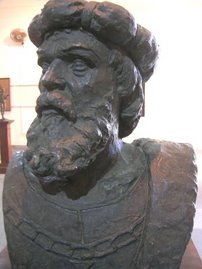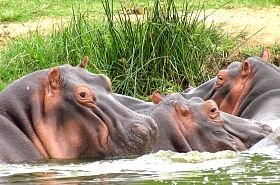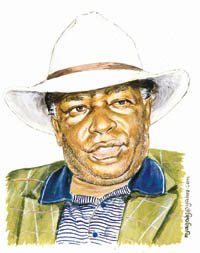Michael Mundia Kamau P.O. Box 58972 00200 City Square Nairobi Kenya Saturday, 14th April 2007I introduce myself as a former employee of BarclaysBank of Kenya, who was last year dismissed fromemployment on scandalous and corrupt grounds. I wasdismissed from service on Tuesday, 21st February 2006.A prelude of the scandalous episode accompanies thise-mail, by way of letters by me dated 21st February2006, 20th February 2006, 14th February 2006, 13thFebruary 2006, 26th January 2006, 5th January 2006 and28th December 2005.You will note a deliberate and manipulative attempt toconceal corrupt, underhand and shadowy dealings at theKenya office of Barclays Advisory and RegistrarServices, a subsidiary of Barclays PLC of the UnitedKingdom and ABSA Africa of South Africa.All efforts over the years to raise concerns with themanagement of Barclays Advisory and Registrar ServicesLimited, Barclays Bank of Kenya Limited and BarclaysBank PLC of the United Kingdom, have gone unheeded,and ultimately resulted in my dismissal on 21stFebruary 2006.I trust that you will first want to study the advancematerial below, before deciding on how to proceed.Yours faithfully,Michael Mundia KamauEncls.--- Mundia Kamau
ODM-K must stop playing games with electorate
By Denis Onyango
ODM-KENYA is beginning to talk to itself but pretending to be talking to its supporters.The monologue is evident in every move the party has made lately. A debate is simmering that the party picks a flagbearer through consensus. Aspirants are discussing it in hotel boardrooms. Alongside the consensus conspiracy is talk that the party needs to pick the one best suited to easily beat President Kibaki in election later in the year. Somebody is trying to make the next elections look like 2002’s.
Then, the pressing issue was to beat Kanu. Kenyans were willing to vote for anything, as long as it looked likely to beat Kanu.But this year, the situation is different and whoever thinks Kenyans are simply looking for Kibaki’s replacement is off the mark. The Kibaki regime is miles ahead of the Kanu Government Kenyans wanted to replace in 2002.
The party and the aspirant seeking to run against Kibaki must not think the urgent thing is to replace him.
Avoid attracting outright failures.ODM-Kenya, in particular, needs to understand that the nation is looking for who can take it a step farther from where Kibaki has put it. Kenyans are not simply looking to replace a regime and an individual as was the case in 2002. One of the tragedies of the presidency in Africa is that it has largely attracted low fliers and, sometimes, outright failures.The desire to leave a mark on the world never bothers African presidents. ODM-Kenya, like Narc, promised to change that. Narc did change the aspirations of the nation. President Kibaki’s regime may not be a starling success, but it is a distinct improvement on the previous regime.
ODM-Kenya was to make Kenyans aim even higher. But the party cannot do this if its immediate task is simply to find one who can beat Kibaki.That is the stuff of nations, leaders and parties without ambition. It is the kind of leadership that will start reasoning that at least we are better off than Somalia. In all progressive nations, elections are a lot more than replacing the incumbent. People look for leaders who can mobilise and motivate the nation. Elections should be about long-term plans.
Party leaders getting smart with the public
The reason J F Kennedy’s legacy refuses to die in America is the perception of his role. Kennedy came to the presidency with the ambition of taking man to the moon in a decade. He never lived to see it happen, but he set in motion a process that came to pass.After talking big for close to a year, ODM-Kenya is now talking to itself and in low tones. Last month, out of the blues, news filtered into newsrooms that the party was heading to London on a peace-building mission.
Presidential hopeful and Mwingi North MP Mr Kalonzo Musyoka broke the news and praised the initiative at a rally in western Kenya. Party leader Mr Mutula Kilonzo confirmed he knew about it, but he would not attend. Another presidential hopeful, Eldoret North MP Mr William Ruto, knew about it and prepared to attend. Mr Uhuru Kenyatta never talked about it. Mr Raila Odinga, who was out of the country, said he would attend. But just before take off, some leaders called a press conference and disowned the trip. After the London debacle, which has never been fully explained, a section of the ODM-Kenya leadership has been demanding that presidential aspirants hold joint rallies.Alongside that, is a quiet push for the party to disown the nomination process, sit in a hotel and pick the candidate. These are signs of a party and leaders beginning to get smart with the public.
It is the kind of smartness that betrays a party running away from something. Proponents of joint rallies say the strategy will save the party from disintegration. The push for consensus is also being touted as a way to keep the party together.
Attempt to confuse the public
For close to a year, ODM-K has gone round the country promising to conduct US-style election primaries that would be a pacesetter in Africa. In the US, no party imagines joint rallies. None fears that an aspirant could defect due to internal campaigns.The idea of a Council of Elders to pick a candidate for the US Democratic Party or the GOP cannot appear even in the dreams of party members.
In the US primaries, aspirants run separate campaigns until the voters make the final decision. Either ODM-K is admitting that its plans were too ambitious or it is running away from something. There is more to being President than winning the highest number of votes. Individual campaigns and subsequent nominations give party supporters a glimpse of the organisational capacity of the campaigner. Putting a rally together requires good management of resources, timing and believers in your cause. An individual who is able to do this successfully makes a statement about his or her abilities. The one who hides behind the party is equally making a statement. Campaigns provide an opportunity for the public to see the candidate’s capacity to rally support. That support should see the candidate win or lose the nominations. Above all, campaigns bring out the ambitions of the aspirants and the extent to which the ambitions resonate with the nation.What is going on in ODM-Kenya now, where the party wants its aspirants to hang together, amounts to an attempt to confuse the public about where the buck stops now and where it will stop if the party takes power. Clouding issues is a strategy ODM-Kenya has pulled on Kenyans.You only need to look at the London trip to notice that the party escaped by spreading blame without anyone taking responsibility. The buck never stopped anywhere and the public may never know the truth about London.The aspirants shut themselves at Nairobi Club, exchanged bitter words and came out claiming they had resolved the issues.The writer is a senior reporter with The Standard
ILA HAVITANGAMANI
Posted by
KENYA NEWS NETWORK
4
comments
![]()
L
Kimunya’s US visit an eye-opener for Diaspora
By James Sang
Those who attended the recent Kenya Business and Investment Forum in Washington, DC, would agree that the organisers, including the Kenyan embassy, did a superb job. The speakers gave useful information on business in Kenya.The theme, Kenya is Open for Business, was apt. Four personalities were impressive — Finance minister Mr Amos Kimunya, Information and Communication Permanent Secretary Dr Bitange Ndemo, Economic Secretary Dr Kamau Thugge and Kenya Investment Authority Managing Director Ms Susan Kikwai. Kikwai lived in DC Baltimore until a few years ago when she went back home.Thugge is also a former resident and brilliant economist (former IMF senior economist). Others who made presentations were Ms Laila Macharia, representing a real estate company in Nairobi, Mr Peter Wairegi, a successful Kenyan businessman in Ohio, and Mr Edwin Nyambeche, Postapay’s representative in the US.Postapay went global a few weeks ago and Kenyans need not send money home through foreing-owned services. It has an office in Baltimore.Ndemo gave an illustration of the good things to come in the information technology sector. In a Powerpoint presentation, he explained how, in the next few months, Kenya will benefit from a new communications infrastructure, a fibre-optic cable being laid between Fujaira in the United Arab Emirates and Mombasa.He disclosed that the terrestrial broadband infrastructure is almost complete. The cable to Malaba is complete and ready for business. Kenyans will use the service in the next eight months. Prior to the meeting, Ndemo had been at Google headquarters in California, where he was promised that the company would build a hub in Nairobi, once the cable is complete. The PS also announced that 50,000 University of Nairobi students would be the first to use Google Apps — an online software. This will be extended to 150,000 students in other universities in the country. He also talked about the explosion of the wireless industry in Kenya.
He recalled that in the 1990s, the joke was that Kenya would not have more than 600,000 mobile phone subscribers. Kimunya said one of the requirements for obtaining a wireless licence was for phone companies to sign up at least 600,000 subscribers. Today, the subscriber base is 10 million.
What impressed most about Kimunya was his eloquence in weaving the economic figures to defend the Government’s record. Nobody expected him to denigrate the Government, of course, but his presentation was a work of art.
However, he scared the audience when he said all the gains that have been made could go up in smoke in the "very unlikely event of a regime change" in the elections later this year.
The minister gave figures that showed how the economy is growing and who was responsible for it. Kimunya cited several parastatals that the Government has revived and how farmers’ returns had improved.
He also went at length to explain the merits of the Kenya Vision 2030, whose annual economic growth target is 10 per cent for the next 23 years. Hopefully, it should turn Kenya into a middle-income nation — an African tiger.
But the function had moments of drama, especially during question time. Most questions were either the run-of-the-mill ‘how-do-you-plan-to-solve-world-hunger’ variety or subject-specific, sometimes laced with a little emotion.
Some assured the minister that Kenyans abroad were patriotic, and that some of the noisemakers who malign their country were good-for-nothing losers. The minister and some in the audience were in agreement with such sentiments.
But other questions were against the grain and went unanswered. A member of the audience derided the minister for painting a rosy picture, yet corruption was, in his words, eating the very fabric of society.
He cited the example of telecommunications licensing, pointing out that when he and a group of Kenyans sought a mobile license, Government officials cheated them out of the process. He claimed that the licence was instead awarded to a ‘briefcase’ entity which, to date, has not been able to offer any mobile services.
The minister simply ignored the issue, concentrating instead on non-specific corruption-related questions. He took a swipe at those criticising the Government on corruption and asked: "What is corruption? Must we parade bodies just to show that we are fighting corruption?"
The minister did not also discuss the relationship between the figures that he had just presented and the stark reality that 50 per cent of Kenyans live below the poverty line.
Kimunya glossed over the slum problem and mentioned something about a slum-upgrading project. On dual-citizenship, the minister stated that the issue took the same route the Wako Draft took. He did not elaborate.
Ms Mkawasi Mcharo, the chair of the Kenya Community Abroad, said Kenyans abroad are active participants in Kenya’s affairs and should have the right to vote.
Kenyans should attend such functions especially when Government officials and other leaders visit the United States. The Kenyan embassy is also a good source of information on the opportunities at home.
The next major event in Washington will be held next week when Finance Ministers from East African countries meet the region’s citizens.
The writer is a Kenyan in Washington DC who works for the Norwegian Council for AfricaILA NA FILA HAVITANGAMANI
Posted by
KENYA NEWS NETWORK
158
comments
![]()
Government has made significant strides
By Martha Karua
When we took office, the economy had ground to a halt and there was a general breakdown of law and order.
Today, we are on course to hit six per cent economic growth. In 2005, the economy grew at 5.8 per cent. By the end of the year, we will have achieved a 200 per cent rise in revenue collection, collecting nearly Sh460 billion in taxes. We are in a position now to finance 95 per cent of our own budget, something that is unique among developing nations.
How many developing countries can boast of such a feat, an almost self-financed budget? The question then is: What are we doing with the extra money? We are building infrastructure and improving livelihoods. We now have water in places where people never believed they would be able to access it. We are on course to meet and surpass the Millennium Development Goals’ targets for delivering portable water.
Improved quality life
In the health sector, 1,000 new dispensaries have been built. On roads, 60 tarmac and concrete ones are under construction and some have been completed. There are plans to construct bypass roads in Nairobi.
We are putting Kenyans’ money to good use. The rise in tax collection has led to improvement in the quality of people’s lives. To place this in context, I will give my constituency, Gichugu, in Kirinyaga as an example. We received only Sh6 million from the Constituency Development Fund in 2003/2004, and with it built a few small bridges. In 2004/2005 financial year, the constituency got Sh23 million, then Sh33 million the following year and Sh43 million this year.
Gichugu now has 44 primary schools and an extra 21 secondary schools (37 up from 16). The constituency received Sh3 million from the Education ministry for bursaries, allowing students who would have fallen by the wayside to continue with education as day scholars.
Have we fought corruption? Yes, we have. But fighting corruption is a process and not an event. It is not something we can eradicate overnight. We are making good progress and doing all in our power to stigmatise it through public education campaigns, and charging perpetrators of corruption.
Corruption is fighting back
There are more than 190 cases pending, brought by the Kenya Anti-Corruption Commission. Investigations into high profile cases such as Anglo Leasing are ongoing. Anglo-Leasing involved 18 cases, but only three contracts were signed during the Kibaki administration. The rest relate to the period between 1997 and December, 2002.
Our greatest challenge is the slow pace of investigations and that the speed with which the wheels of justice are turning. We are looking for ways of improving the record. Corruption is fighting back and attempting to capture the State once again. We must not let this happen. We must invest in good leadership that will continue to take us forward. There is a difference today in Kenya, because there is a difference in leadership.
Those who would have you believe that Kenya is not on the right track will talk about tribalism and corruption. Let me remind you that this is the most representative Government since independence. Be sceptical about those shouting loudest about corruption because they do so for political ends. It is a dishonest campaign of political propaganda.
If corruption was at the levels they would have you believe, then why are there huge improvements in growth, infrastructure development and revenue collection? I am not saying we have eradicated corruption, but we have reduced it.
We are winning the war and the gains are obvious for all to see. I implore the Kenyan community overseas to act as ambassadors for the nation.
The writer is the Justice and Constitutional Affairs minister. She spoke to Kenyans in the UKLILA NA FILA HAVITANGAMANI
Posted by
KENYA NEWS NETWORK
26
comments
![]()
From: jacko mafia Sent: Tuesday, January 23, 2007 6:00 PM To: Linus Gitahi Cc: Wangethi Mwangi ; Joseph Odindo; Helen Mbugua;Editorial@nation.co.ke; newsdesk@nationa.co.ke;news-citizenTz@nation.co.ke; NTV News; NyeriEditorial;eldoretstaff; Msa Editorial; Kisumu Advertising;Nakuru AdvertisingSubject: Re: The lid is off Dear Mr Gitahi. This is a letter from the staff of the EditorialDepartment and it ' s a follow up to another letter wesent you in December highlighting teething problemsfacing our department. We are pleased to inform you that we are pleased withthe steps you have taken so far to address theproblems in the Editorial Department and in the largerNMG. From our own observation of the manner you havegone about your business, we now know we have a CEOwho has the interest of the NMG and its staff atheart.In our December letter, we have told you that we wouldwait until end of January to see if there were goingto be any meaningful changes and reforms carried outby your administration. We have reliably been informedthat a radical surgery is in the offing and yourdreams are to see the right staff on the NMG bus. Weare committed to support all your resolve to offloadthe excess and unproductive passengers from the NMGbus.We, too, don ' t want joy riders and blood suckers wholive on other people ' s sweat. We would prefer leanerand a productive staff who are rewarded according totheir performance.However, we are disturbed that, whereas you mean wellfor the Editorial Department, you have taken the wrongpath in picking the team of managers to select thestaff to be offloaded from the NMG bus. We understandthe editorial team comprise of the Editorial Director,Mr Wangethi Mwangi , the Group Managing Editor, MrJoseph Odindo, and the Group HR Director, Ms HellenMbugua.The three managers, and to a large extent Mr Mwangiand Mr Odindo, are the source of the problemsbedeviling the Editorial Department and we gave youthe reasons in our December letter. Since weunderstand the exercise for identifying the staff tobe offloaded, transferred and promoted is complete, wedecided to bring our heads together and decide the wayforward. Journalists from Nairobi and representativesfrom all the bureaus held a meeting at a venue anddate we will not disclose and came up with a resolveto write to you again and communicate what wasdeliberated. Mr Wangethi and Mr Odindo should be nowhere near anymeeting where any reforms and changes in the EditorialDept are being carried out. The two should have beenthe first casualty of your Administration ' s reforms.Just like President Kibaki put his foot in the mouthby retaining Kanu ' s civil servants intact, webelieve you have squandered a good opportunity toclean up the mess in the Editorial Dept by appointingthe Mr Mwangi and Mr Odindo to spearhead the reforms. We demand that the exercise of laying off unproductivestaff must be transparent and target thenon-performers. Mr Mwangi and Mr Odindo may use theexercise to get rid of good staffers they don ' tlike. In our December letter, we listed the joy-ridersand the multiple posts which were purposely created byMr Mwangi and Mr Odindo to reward their friends andgirlfriends. We demand that the posts be abolished andall the busy body bosses be the first to be shown thedoor. Mr Mwangi and Mr Odindo filled the newsroom withtheir girlfriends and friends poached from other mediahouses, yet they are unproductive and can hardly writeany literate story. These too must be offloaded fromthe NMG bus. We want to know why none of the women whohave extended sexual favours to both Mr Mwangi and MrOdindo have been spared the axe. Adhiambo Odera, whowas employed directly to the position of the Editorafter a sexual encounter in Malindi with Mr Mwangi isone of those women who have been spared yet her workis good mastery of illiteracy. She can ' t write oredit any story. Editing of Buzz magazine is done bycorrespondents. But she can ' t be touched becauseboth Mr Mwangi and Mr Odindo share her as lovers andthey fear she can expose them. It ' s the same casefor many other women. Mr Mwangi and Mr Odindo, yourwives will be hearing from us very soon. We had informed you and listed sections which areheaded by managers who are non-university graduates.Examples are the News Desk, where we have foureditors, and only one is a graduate. The Form Sixgraduates were put there deliberately by Mr Wangethifor his own selfish reasons so that they can dance tohis tune. We can ' t have reporters who haveuniversity degrees and masters reporting to Form Sixmanagers! They too must leave or be demoted and giventheir rightful places like the copy-taking desk. The House that his Highness the Aga Khan built hasbeen into a brothel by top managers. Mr Wangethi, MrOdindo and Mr Nabutolla have one thing in common –they take the golden cup for their ability ofquenching their sexual lust using NMG femaleemployees. The prime factor and criteria forpromotions and hiring of female reporters and editorshas been their sexual performance. This is somethingthe Aga Khan and the entire world have never known.This is something we are going to expose and bring itto the attention of the Aga Khan and the world. In ourDecember letter, we listed just a fraction of thefemale staff who have been rewarded with plum jobs andpromotions after satisfying the sexual lust of MrMwangi and Mr Odindo. How then can the same sexperverts be the ones spearheading the laying off ofunwanted staff? We hope you had time to make your ownindependent investigations to verify the insight wegave you on the string of women who have been promotedor hired by the two managers based on their sexualperformance. Finally, we give both Mr Wangethi and Mr Odindo up toend of February to resign from NMG or we smoke themout. We have laid a water-tight strategy to do so. Wehave various options to do so if you don ' t forcethem to resign or their conscience doesn ' t drivethem to doing so.Among the strategies we have are exposing the shame ofNMG being a brothel in all parts of Kenya, Nairobibeing the main focus, presenting the spouses of MrWangethi and Mr Odindo and the women they have beensleeping with with evidence, and writing to the AgaKhan and informing how his House has been turned intoa brothel by the managers he has employed to managehis affairs. We have the contacts of all their spousesand they will hear from us very soon. We will alsocirculate pamphlets on the streets detailing whosleeps with who in NMG. Other strategies remain oursecret and it ' s up to you to decide if you want thevibrant company you inherited from Mr Kiboro to sinkunder your watch. Things will start rolling very fastfrom March 1 if our demands are not met. But we willsupport you if we are satisfied with the reforms andthe departure of Mr Mwangi and Mr Odindo.Ms Hellen Mbugua, we also have a dose for you. Yourhusband will also be hearing from us on your sexescapades with KBC MD. We have water-tight dossier onyou.We can ' t sit back and allow immorality to continuethriving in NMG. NMG will explode and the rot whichhas been perpetuated by top managers will soon be inpublic domain. We can ' t be exposing the likes ofBishop Margaret Wanjiru and Sam uel Gichuru yet wehave managers and other staff who are worse rotten. Weare putting on notice Mr Mwangi , Mr Odindo and theother managers who have found it difficult to keeptheir zips tightly shut that sex scandals and the sextree of who sleeps with who in Editorial and otherdepartments will be public knowledge soon. They shouldstart preparing their spouses psychologically. Watchthis space!NMG prides itself as a successful company, a marketleader and a mirror of the society. We must set theexample by actions and deeds. Managers can ' t preachwater and drink wine. The hour of reckoning has come.The lid has been blown off internally and soon theworld will be reading about the brothel that is NationCentre.We wish you luck! Cc Wangethi Mwangi Joseph Odindo Hellen Mbugua All NMG staffContinuation below;Dear Mr Linus Gitahi,CEO Nation Media GroupNairobi, Kenya On January 23, 2007, the staff of the Editorial Deptwrote an open letter to you detailing the rot and sexscandals that have rocked the house His Highness theAga Khan built. We are sure the Nation Media Groupleadership has never revealed to the Aga Khan thetruth that the house he built from holy funds has beenturned into a brothel by the very same senior managershe has entrusted with running his affairs. All is notwell at the leading Media House in East and CentralAfrican region but you have shown you are leastbothered. The information we have is that when you, Mr WangethiMwangi and the other top brass visited the Aga Khan inParis between February 5 and 7, you only presented thegood side about the NMG leadership and deliberatelyomitted the rot that has been choking the majority ofinnocent and clean staff. That is understandable. TheNMG leadership has a reputation of covering eachothers backs, even when a few apples in their midstare stinking. The Aga Khan and the entire world willsoon be hearing from us. Instead of addressing the problems we raised in theStaff Climate Survey forms that were submitted to theHR Dept in October and the views we gave during a teambuilding retreat in Loitokitok,a couple of years back,you have decided to organize yet another retreat. Whatwe said in Loitokitok, in other forums and in thevarious letters we have sent you has never beenaddressed and nothing has ever changed. This shows thecontempt you hold the Editorial Dept, which is thepillar of this media giant. We have various options atour disposal to see who surrenders first. No one willbe spared, even yourself if we find anything of yourdark past. Nothing can bribe us. We will continuerocking the boat even after we come back from theretreat. We will go to the retreat you have organized as aritual to satisfy your own curiosity, not because wehave any faith in the retreat or your leadership. Yousquandered a very good opportunity to clean up themess when you sanctioned the retrenchment of smallfish who had done nothing wrong and left the networksof corruption and immorality intact. In our earlier letter to you, we demanded theimmediate resignation of the Group Editorial Director,Mr Wangethi Mwangi, and the Group Managing Editor, MrJoseph Odindo, for bringing to shame the journalismprofession by being involved in a string of sexscandals and being solely responsible for the mess inthe Editorial Department by trashing the laid downpolicies on employment and promotions to quench theirsexual appetite and reward their friends and cronies. It's a well known fact even outside NMG that Mr Mwangiand Mr Odindo have been using helpless and innocentfemale staff as sex pawns to achieve personal andnarrow objectives. Although a majority of the femalestaff are upright, but there is ample evidence thatsome have been given jobs, promotions and salaryincrements based on their sexual performance. NMGrules on promotions and employment have largely beenignored by the two senior editors and they have beenrewarding their friends and women they have taken tobed based on sexual performance. This culture has beengoing on for years and we expected you would bring itto an abrupt end and clean up the mess. Sadly, youtotally disappointed us and killed our spirits. However, as you categorically stated during a staffmeeting with the entire editorial on February 1, 2007,you are least bothered by rot in Nation Centre and itnot your desire to put things right. In your address,you expressed confidence in the rotten managers and wecan only conclude that you endorsed their crookedways. You simply gave them a clean bill of health. In our letter, we given both Mr Mwangi and Mr Odindoup to end of February to search their conscience andresign. However, there are strong indications thattheir conscience doesn't prick them. We will prick itfor them. You have seen nothing yet. The chickens arecoming home to roost from March 1. Tighten your nervesand wait. We will systematically slay them one afterthe other with hard facts and the absolute truth. Aswe said, the choice is purely theirs. They choose totake an early bus home and save themselves and theirfamilies stinging humiliation or cling to theiroffices and walk around town smelling like raw sewage. You must have your own reasons why you want to defendthe rotten managers. And we have our own reasons forexposing them. Contrary to the suggestions that weremade by yourself and other speakers during theFebruary 1 meeting that those who have been exposingthe rot in NMG have the desire to rock the boat, theclaims are further from the truth. There is a cleardistinction between a company and an individual'spersonal conduct and affairs. It nonsensical to insinuate or imagine that the NMGboat would sink just because the sex predators havebeen exposed. It's purely a personal decision forthose managers who have been walking around NationCentre with their zips open. The managers and theirgirlfriends must carry their own crosses and not dragthe rest of us in their immoral ways. NMG's great namewill never sink because of the people who have turnedNation Centre into a brothel. We were shocked that instead of taking the platform onFebruary 1 to congratulate the brave men and women whowants good morals to be restored at Nation Centre, youdecided to demonise them. Your hard stance and the newlifeline you gave the sex predators will be yourundoing. You have given us new resolve to go the extramile of bringing to shame the managers who can't keeptheir zips shut. In the same way Nation has beentaking pride in splashing stories on Mr John Githongoexposing the mega corruption in Kibaki's backyard andthe horrifying sex life of the flamboyant BishopWanjiru, NMG managers who have a dark history shouldstart dreading March 1. What moral authority does NMGhas to expose the evils in society if it can't cleanup its own mess or remove a log in its own eyes? Our research and analysis team has completed itsinvestigation and they have pieced together adetailed, accurate and comprehensive dossier on thesex scandals at NMG. The dossier will be madeavailable in the internet, the streets of Nairobi andother major towns, to the wives and children of thesex pests, the diplomatic community, religiousorganizations and all NMG staff. The dossier contains shocking revelations on the sexlives of senior NMG managers. We have photographicevidence, confession statements and affidavits fromsome of the women who have been lured to bed by themanagers and others from the men who had to breakrelationships with their spouses or fiancés afteruncovering secret love affairs involving NMG managers,court documents on some of the managers who have foundthemselves in court to defend themselves on damagingsex scandals, emails and mobile telephone computerprint-outs. We promise you it will be a must read.Continue watching this space. At the moment, our research team has pieced together adetailed report on the sex lives of four seniormanagers and it will start rolling off our mill fromMarch 1. We will give you the snap shots of what toexpect. Ms Helen MbuguaGroup Human Resources DirectorFind out: • How a love affair blossomed between MrsMbugua and Mr David Waweru before he moved from NationCentre to KBC. • How Mrs Mbugua sneaks her lover to hermatrimonial home in Kilimani when her husband is outof the country and the children are away. • Why the love affair wont end and why MrMbugua needs to worry. • Do we have photos of the two love-birds? Findout from us from March 1. It's a secret romance thatwill leave you on edge. This information will land in your house in Kilimani. Mr Cyrille NabutolaGroup Marketing Director Find out: • Why Mr Nabutola is referred to as the Bull ofNation Centre• How many sales executives he has had affairswith and how many are proud mothers of his children.• His romantic adventures in the office• Why NMG leadership can't dare touch himdespite being aware of his love escapades. This information will land in your house in Runda. Mr Wangethi MwangiGroup Editorial DirectorFind out: • His love affairs with Irene Karanja (hisformer secretary), Veronica Kinyanjui (former FeaturesEditor), Linda Gacheru (a junior staff who rosethrough the ranks rapidly and ended up in a plum jobthe HR Dept), Wahu (formerly of Advertising Dept),Njeri Mwangi (formerly a reporter of Editorial Dept),Adhiambo Odera (Buzz Editor) and Claire Gatheru (areporter who was axed in the recent retrenchment).• Why Irene's husband who was a lawyercommitted suicide in an Eldoret hotel.• How the police treated the death and shockingletters that our research team has uncovered that ledto Irene's husband committing suicide.• How did he discover the secret love affairbetween Mr Mwangi and how he desperately tried to stopthe affair in vain.• What Irene's husband said before he decidedto kill himself. Would he be alive today were it notfor Mr Mwangi?• How a love affair blossomed between Mr Mwangiand Linda. Why did her fiancé abruptly cancel hiswedding with Linda? Why did Mr Mwangi jump out throughthe window of her Buru Buru House at night? What roledid Mr Mwangi play in the break up? • How Mr Mwangi continued with the affair withLinda even after she found a new love, who ended upmarrying her. • Why Linda's husband had jitters on thewedding day. Why was he jittery? Why did Mr Mwangitactfully swap his green Mercedes Benz with KenOluoch's on the eve of the wedding for transportingthe bride?• Why Mr Mwangi spirited Linda out of NMG andsecured her a job elsewhere. Why did Linda abruptlychange jobs?• What Njeri Mwangi said in her affidavit on MrMwangi's sexual advancement?• What happened to the sexual harassment caseNjeri Mwangi filed in the High Court against MrMwangi.• Why has Njeri Mwangi returned to Kenya fromthe US . What's the new weapon she has against MrMwangi. Why did Mr Mwangi go into a hysterical panicwhen he learnt Ms Mwangi was back in the country.• The full details of the love triangleinvolving Mr Mwangi, Mr Odindo Adhiambo Odera. Who arethe other lovers of Ms Odera in the newsroom? Do thetwo top editors share her with junior reporters behindtheir backs? • Why does Ms Odera prefer to use two thick CDswhen she sleeps with her bosses?• Why did Ms Odera opt to seduce bosses? Howdid Macharia Gaitho escape Ms Odera's trap? Did MutumaMathiu fina lly fall into the trap?• Why Mr Mwangi and Mr Odindo influenced theemployment of Ms Odera knowing too well that she hadbeen to a back-street college and she can't write oredit a story. Why did she rise from a merecorrespondent straight to an editor without being areporter after a romantic expedition with Mr Mwangi inMalindi? DESPITE WANGETHI'S DENIALS, WE HAVE COPIES OF THERECEIPTS HE AND ADHIAMBO USED AND THE TEXT MESSAGESSHE SENT HER FRIENDS INFORMING THEM THAT SHE WAS INMALINDI BEING SCREWED BY NONE OTHER THAN WANGETHI. Andwhat about the digital camera she used to walk aroundthe newsroom boasting she had been given by Wangethiduring the Malindi outing. • Why were Mr Mwangi and Mr Odindo in adesperate situation when Mr Kiboro put his foot downthat Ms Odera was not qualified for the job? What didthey do to prevail upon Mr Kiboro to change his mind? Read much more about the Wangethi Mwangi you havenever known from March 1. This information will landin your house in Kileleshwa. Mr Joseph OdindoGroup Managing EditorFind out: • His secret love affairs with Adhiambo Odera,Ms Lucy Oriang (whom he has been instrumental ingiving her plum jobs when a new list of promotions isout), Ms Rhoda Orengo, and a string of other women.• The secret affair between him and MildredNgesa and why he influenced her switch from theStandard to NMG. This information will land in your house in Lavington. FOR THE RECORDED TAPES OF ADHIAMBO'S LOVE AFFAIRS WITHWANGETHI, ODINDO, HOW SHE TRAPPED ANY NEW MANAGINGEDITORS OF THE SUNDAY NATION, MAKE A DATE WITH US FROMMARCH 1. GET A FIRSTHAND RECORDED CONVERSATIONSBETWEEN WANGETHI AND THE OTHER NMG MEN WHO HAVE EVERSCREWED HER. IT'S THE HOTTEST SEX SCANDAL YOU WILLNEVER WANT TO MISS. GITHONGO'S TAPES ARE CHILD'S PLAY. The mess and stench in the Editorial Dept is acreation of Mr Mwangi and Mr Odindo. Are these thepeople His Highness the Aga Khan has entrusted withthe affairs of his great company? Are these the rolemodels our own children? Are they fit to be the mirrorof our society? What moral authority do they have topoint out ills in the society? NMG prides itself as the leading media house in Eastand Central African region but its reputation is nowat stake because of a small group of the ruling elite.We promise you that the dossier will shake the NMGright in its core and the world will for the firsttime know the dark and hallowing secrets that NationCentre conceals. It's the responsibility of themajority of the staff who mean well for the future ofNMG to preserve the integrity of this great companyand the journalism profession. Before the Feb 28 deadline approached, we would liketo urge you, Mr Gitahi, to convene another meeting ofthe entire editorial staff, like the one which washeld on 3rd floor on February 1, 2007, so that MrMwangi, Mr Odindo, Mr Nabutola, Mrs Mbugua and a fewother sex pests we are currently digging their darkhistory can take the Holy Bible and swear they are notguilty of the issues we have raised above. During theFebruary 1 meeting, the entire floor burst intolaughter when Mr Mwangi broke down when he wasnarrating how his wife had confronted him with aCitizen newspaper which carried a story on his sexlife. Nobody sympathized with him because everybody on3rd floor knows the truth. Redundant postsMr Mwangi and Mr Odindo are responsible for creatingso many posts which duplicate roles to reward theirfriends and girlfriends. In our previous letters, wehave listed the posts that need to be merged orscrapped but this has fallen on deaf ears. We have awhole battalion of people walking around the newsroomcarrying titles of editors and they have nothing toshow for it. A big chunk of the budget for theEditorial Dept goes to paying heft salaries for theidle editors. It's immoral to pay one idle editorSh400,000 each month and pay a reporter who toils likeslave Sh60,000. All the top editors and managers earnsalaries of between Sh500,000 and Sh1million plus eachmonth. For instance, where is the wisdom of having the postsof Editorial Director and Group Managing Editor? Andwhat about the numerous posts of Managing Editors? Andyet still, the countless posts of editors? No wonderMr Mwangi has a lot of time to lift skirts, play golfduring morning working hours and entertain his friendsin beer sessions in his office in the afternoon. AndMr Odindo is often falling asleep in his office in theafternoon due to boredom. And this happens whenmajority of hardworking journalists are toiling sohard to generate the hefty salaries and perks for thebored and idle editors. It was also shocking to hearyou and the other managers making a mockery about ourdegrees. Where else doe we have Form Six editors inthe newsroom apart from NMG? How can correspondentsand reporters who are university graduates, some withfirst degrees and others with Masters degrees,continue reporting to Form Six drop outs? It's thepolicy of NMG that reporters and correspondents shouldhave a minimum qualification of a university degree.Why is the rule an exception to some of the editors? Mr Gitahi, you have no option but to respect ouracademic qualifications. Form Six and Form Foureditors must leave our newsroom if you want peace. UnionIt was ridiculous to hear managers on February 1denying they had not played any role in killing thejournalists union. There is no doubt that NMGleadership played a big role in the death of the unionand this started when new journalists were denied achance to join KUJ. This weakened the union sincemembers who leave are not replaced. Salaries for ourmembers have not been reviewed for the past threeyears. Yet, the management staff gets heft pay riseevery January. We demand the immediate review of oursalaries. Flimsy excuses wont wash. CorrespondentsAbout 75 percent of the content published in all NMGpublications is the work of correspondents, casualworkers who are paid peanuts for the sweat of theirlabour. Though NMG prides itself as the champion ofhuman rights and publishes stories on how othercompanies oppress their employees, the oppositehappens in NMG. Correspondents are today's modernslaves. Although they toil so hard, they end up beingpaid peanuts and most of them live in abject povertyand die in misery. This lot is paid by the length ofthe stories they write. But the mode of calculation istop secret by the NMG leadership to ensure a hugechunk is taken away from the poor correspondents totake care of the hefty salaries of their bosses. Thatis one way the Editorial bosses manage to live withinthe department's budget. We demand better pay. Mostcorrespondents remain unemployed during their entirecareers. It’s a miracle for the correspondents,especially those in the rural areas to earn Sh5,000 amonth. Isn’t it immoral for editors and a group ofwell connected staff to go smiling all bank and thepoor and voiceless correspondents can't have a decentliving We demand a complete overhaul of the entire EditorialDept. Idle bosses and all those tainted withcorruption must be sent packing. We need a transparentcriteria of employment, promotions and sharing oftraining opportunities. There will never be any peacein Nation Centre until these demands are met. We aretired ऑफ़ selling our blood for peanuts. Moto umewaka. Let's have a date with each one ऑफ़ you on March 1. Thewhole truth about the rot and decay in Nation Centrewill be on display for the whole world to read andsee.LILA NA FILA HAVITANGAMANI
Posted by
KENYA NEWS NETWORK
3
comments
![]()
Since the government published a report showing the various poverty levels in the country, there have been various attempts by politicians and scribes to blame the Sessional paper No 10 of 1965 on African Socialism and its Application to Planning in Kenya as the source of these disparities. Others have sought to blame the allocation of government resources by the current NARC government in a blatant attempt to distort history.
The ideological rift
What needs to be clarified is that Kenya attained independence at the height of the ideological rift between the right and the left along the East/West détente. Kenya’s political leadership was divided along these two sides with the late Jaramogi Oginga Odinga representing the leadership of the socialist ideology while Tom Mboya represented the group in support of the capitalist ideology.
As scholars of Kenya’s political history would bear testimony, it was following the acrimony that this debate generated that the late President Kenyatta asked officials at the Ministry of Economic Planning and Development to prepare a definitive document outlining Kenya's development ideology with a view to ending the heated ideological debate. It is against this background that the Sessional Paper No. 10 on African Socialism and its Application to Planning in Kenya was developed.
What was clear in the mind of Kibaki, then a fresh graduate from the London School of Economics, was the need to borrow on internationally proven economic and social models that would facilitate wealth creation, shared growth and the intensified fight against poverty.
It is also important to correct the erroneous impression by some that there was a struggle between Kibaki and late Jaramogi Oginga Odinga over the system of economic management that Kenya would adopt. The struggle was between Mboya and Jaramogi Odinga and began soon after the arrest of the Kapenguria six and the ban of political associations in Central Kenya.
With the arrest of the six, it was Jaramogi Odinga and Tom Mboya who emerged as key leaders of the nationalist movement. As members of the same community, a struggle emerged between them over political supremacy in Nyanza.
The development decade
Secondly, it is a distortion of history to suggest that President Kibaki was part of a system that widened income disparities. When the history of Kenya is accurately traced, what emerges clearly is that Kibaki as Finance Minister presided over what was dubbed by the United Nations as the Development Decade. During this period, the Kenyan economy was growing at 6% annually. It was Kibaki who steered the economy even through the trying moments of the oil crises of 1973.
The relatively good performance of the economy in this period was reflected in relatively decent living standards for a majority of Kenyans, lower levels of poverty, high enrolments in schools, reliable infrastructure, increased investments and the competitive position of the country in the region.
It was also during this period that Kenya made giant strides in human resource development. The Sessional Paper had quite correctly identified the lack of skilled personnel as a major problem to be urgently addressed. The rationale was premised on the indisputable fact that human resources are the ultimate basis of empowering the people and enabling wealth creation. Accordingly, the government invested heavily in education.
Indeed, throughout the 1960's and early 1970's, the Kenya government spent more on education as a percentage of national income, than any other government in the world. This resulted in the spectacular increases in school enrolment throughout the country. We all acknowledge that there is no better way of giving people equal opportunities than providing education.
Value adding agricultural industries
It was also during Kibaki’s tenure at the treasury that deliberate efforts were made to make capital, at low interest rates, available to Kenyans through the Land Bank, the Agricultural Finance Corporation (AFC) and the Industrial and Commercial Development Corporation (ICDC). It was during this period that firms like KICOMI in Kisumu, Pan Paper Millers in Webuye, RIVATEX in Eldoret, KTM in Thika, Kenya Cashew Nuts and Ramisi Sugar in Coast province, Kenya Meat Commission in Athi River and Kenya Co-operative Creameries with factories in very part of the country, flourished.
These and a host of other institutions were built on the premise that value addition was the key to poverty alleviation for our majority population that is reliant on agriculture. Every Kenyan knows what happened to these vibrant institutions that provided thousands of jobs to our youth, as politics of expediency became the norm in the country.
Economic stagnation
The truth of the matter is that the problems of increased wealth inequalities and poverty begun to worsen in the period that the United Nations termed as the lost decade in the 1980s and 1990s. This period, which continued up to 2002, was a period of stagnation and decline. During this period, economic performance was dismal with growth rates averaging less than 2 per cent.
Poverty and unemployment levels increased to unprecedented levels. It is estimated that by the year 2000, about 57% of Kenyans could not afford basic necessities while open unemployment was as high as 40%. Enrolment in primary schools declined steadily to less than 85%. Infrastructural installations deteriorated to a state of near collapse. Investment levels declined, as did the competitiveness of the country in the region. As Kenyans will recall, this was the period when the politics of patronage took center stage and only those regions of the country that were considered loyal qualified for development.
Finally the claim that not much is being done to address inequalities in wealth distribution is equally misleading. It is important to clarify that the NARC government under President Kibaki has taken serious efforts to address poverty, redress regional inequalities and ensure the equitable distribution of resources. Perhaps the most remarkable step in this regard is the introduction of Constituency Development Funds.
Under this new initiative, the government commits 2.5 per cent of total government revenue to financing development in all the 210 constituencies in the country. It is important to note that poor constituencies receive more money for development that richer ones.
Only three quarters of the funds are shared equally between the constituencies while the rest is allocated to poor constituencies. As Kenyans can find out on the CDF website, constituencies in Central Kenya which were ranked among the most wealthy received about Kshs.5 million less than those ranked poorer.
As a further measure of ensuring equality, the government of President Kibaki introduced the policy of free primary education. This policy has opened school doors to millions of children who would otherwise have missed out on education due to poverty. Primary school enrolment has increased tremendously in the last two years. Gross Enrolment rate for primary schools now average 99 percent.
It merits mention that in addition to this, the Government is targeting resources to disadvantaged areas and increasing bursary schemes for poor children in secondary schools. In total, the Government is spending over 28 percent of its resources in education. The recently released Poverty report clearly spelt out that education levels were a key determinant in wealth creation.
Furthermore, the government has embarked on a policy of affirmative action in which it is seeking to speed up development in marginalized areas. In Northern Kenya, for example, President Kibaki personally launched a ten billion shilling five- year development plan for the region. This plan outlined the specific measures that would be taken to integrate this part of the country in the mainstream national economy.
In appreciation that the agricultural sector employs the majority of Kenyans and therefore presents the best avenue of improving wealth distribution and fighting poverty, the government of President Kibaki has implemented extensive agricultural reforms than any other regime in our history. The reforms have resulted in improved performance of the sector. Farmers are now not only paid on time but earn more from their produce.
Indeed, the earnings of dairy and livestock, sugar, tea, and coffee farmers across the country have steadily and consistently improved in the last two and half years. It is therefore clear that the Government of President Kibaki is committed to poverty eradication and the equal distribution of available resources.
The proposed constitution clearly stipulates the powers that will be bestowed upon the devolved districts and the role of the Equalisation Fund.
Kenyans can expect more years of progress when President Kibaki steers Kenya into greater heights of prosperity under a New Constitution that promises a new Dawn for all Kenyans.LILI NA FILA HAVITANGAMANI
Posted by
KENYA NEWS NETWORK
1 comments
![]()
President Kibaki presided over the development decade
Since the government published a report showing the various poverty levels in the country, there have been various attempts by politicians and scribes to blame the Sessional paper No 10 of 1965 on African Socialism and its Application to Planning in Kenya as the source of these disparities. Others have sought to blame the allocation of government resources by the current NARC government in a blatant attempt to distort history.
The ideological rift
What needs to be clarified is that Kenya attained independence at the height of the ideological rift between the right and the left along the East/West détente. Kenya’s political leadership was divided along these two sides with the late Jaramogi Oginga Odinga representing the leadership of the socialist ideology while Tom Mboya represented the group in support of the capitalist ideology.
As scholars of Kenya’s political history would bear testimony, it was following the acrimony that this debate generated that the late President Kenyatta asked officials at the Ministry of Economic Planning and Development to prepare a definitive document outlining Kenya's development ideology with a view to ending the heated ideological debate. It is against this background that the Sessional Paper No. 10 on African Socialism and its Application to Planning in Kenya was developed.
What was clear in the mind of Kibaki, then a fresh graduate from the London School of Economics, was the need to borrow on internationally proven economic and social models that would facilitate wealth creation, shared growth and the intensified fight against poverty.
It is also important to correct the erroneous impression by some that there was a struggle between Kibaki and late Jaramogi Oginga Odinga over the system of economic management that Kenya would adopt. The struggle was between Mboya and Jaramogi Odinga and began soon after the arrest of the Kapenguria six and the ban of political associations in Central Kenya.
With the arrest of the six, it was Jaramogi Odinga and Tom Mboya who emerged as key leaders of the nationalist movement. As members of the same community, a struggle emerged between them over political supremacy in Nyanza.
The development decade
Secondly, it is a distortion of history to suggest that President Kibaki was part of a system that widened income disparities. When the history of Kenya is accurately traced, what emerges clearly is that Kibaki as Finance Minister presided over what was dubbed by the United Nations as the Development Decade. During this period, the Kenyan economy was growing at 6% annually. It was Kibaki who steered the economy even through the trying moments of the oil crises of 1973.
The relatively good performance of the economy in this period was reflected in relatively decent living standards for a majority of Kenyans, lower levels of poverty, high enrolments in schools, reliable infrastructure, increased investments and the competitive position of the country in the region.
It was also during this period that Kenya made giant strides in human resource development. The Sessional Paper had quite correctly identified the lack of skilled personnel as a major problem to be urgently addressed. The rationale was premised on the indisputable fact that human resources are the ultimate basis of empowering the people and enabling wealth creation. Accordingly, the government invested heavily in education.
Indeed, throughout the 1960's and early 1970's, the Kenya government spent more on education as a percentage of national income, than any other government in the world. This resulted in the spectacular increases in school enrolment throughout the country. We all acknowledge that there is no better way of giving people equal opportunities than providing education.
Value adding agricultural industries
It was also during Kibaki’s tenure at the treasury that deliberate efforts were made to make capital, at low interest rates, available to Kenyans through the Land Bank, the Agricultural Finance Corporation (AFC) and the Industrial and Commercial Development Corporation (ICDC). It was during this period that firms like KICOMI in Kisumu, Pan Paper Millers in Webuye, RIVATEX in Eldoret, KTM in Thika, Kenya Cashew Nuts and Ramisi Sugar in Coast province, Kenya Meat Commission in Athi River and Kenya Co-operative Creameries with factories in very part of the country, flourished.
These and a host of other institutions were built on the premise that value addition was the key to poverty alleviation for our majority population that is reliant on agriculture. Every Kenyan knows what happened to these vibrant institutions that provided thousands of jobs to our youth, as politics of expediency became the norm in the country.
Economic stagnation
The truth of the matter is that the problems of increased wealth inequalities and poverty begun to worsen in the period that the United Nations termed as the lost decade in the 1980s and 1990s. This period, which continued up to 2002, was a period of stagnation and decline. During this period, economic performance was dismal with growth rates averaging less than 2 per cent.
Poverty and unemployment levels increased to unprecedented levels. It is estimated that by the year 2000, about 57% of Kenyans could not afford basic necessities while open unemployment was as high as 40%. Enrolment in primary schools declined steadily to less than 85%. Infrastructural installations deteriorated to a state of near collapse. Investment levels declined, as did the competitiveness of the country in the region. As Kenyans will recall, this was the period when the politics of patronage took center stage and only those regions of the country that were considered loyal qualified for development.
Finally the claim that not much is being done to address inequalities in wealth distribution is equally misleading. It is important to clarify that the NARC government under President Kibaki has taken serious efforts to address poverty, redress regional inequalities and ensure the equitable distribution of resources. Perhaps the most remarkable step in this regard is the introduction of Constituency Development Funds.
Under this new initiative, the government commits 2.5 per cent of total government revenue to financing development in all the 210 constituencies in the country. It is important to note that poor constituencies receive more money for development that richer ones.
Only three quarters of the funds are shared equally between the constituencies while the rest is allocated to poor constituencies. As Kenyans can find out on the CDF website, constituencies in Central Kenya which were ranked among the most wealthy received about Kshs.5 million less than those ranked poorer.
As a further measure of ensuring equality, the government of President Kibaki introduced the policy of free primary education. This policy has opened school doors to millions of children who would otherwise have missed out on education due to poverty. Primary school enrolment has increased tremendously in the last two years. Gross Enrolment rate for primary schools now average 99 percent.
It merits mention that in addition to this, the Government is targeting resources to disadvantaged areas and increasing bursary schemes for poor children in secondary schools. In total, the Government is spending over 28 percent of its resources in education. The recently released Poverty report clearly spelt out that education levels were a key determinant in wealth creation.
Furthermore, the government has embarked on a policy of affirmative action in which it is seeking to speed up development in marginalized areas. In Northern Kenya, for example, President Kibaki personally launched a ten billion shilling five- year development plan for the region. This plan outlined the specific measures that would be taken to integrate this part of the country in the mainstream national economy.
In appreciation that the agricultural sector employs the majority of Kenyans and therefore presents the best avenue of improving wealth distribution and fighting poverty, the government of President Kibaki has implemented extensive agricultural reforms than any other regime in our history. The reforms have resulted in improved performance of the sector. Farmers are now not only paid on time but earn more from their produce.
Indeed, the earnings of dairy and livestock, sugar, tea, and coffee farmers across the country have steadily and consistently improved in the last two and half years. It is therefore clear that the Government of President Kibaki is committed to poverty eradication and the equal distribution of available resources.
The proposed constitution clearly stipulates the powers that will be bestowed upon the devolved districts and the role of the Equalisation Fund.
Kenyans can expect more years of progress when President Kibaki steers Kenya into greater heights of prosperity under a New Constitution that promises a new Dawn for all Kenyans.LILI NA FILA HAVITANGAMANI
Posted by
KENYA NEWS NETWORK
6
comments
![]()
Economic growth rates and projections
Brief Introduction
The Kenya’s economy has reflected a marked growth making its way up the recovery path since 2002. Under the Economic Recovery Strategy for Wealth and Employment Creation (ERSWEC), various reforms have been effected and these have had an overall positive effect on the economy.
In the year 2004 the Real Gross Domestic Product (GDP) computed under the basis of the new System of National Accounts (1993 SNA) expanded by 4.3% compared to 2.8% in 2003. There are particular sectors that recorded immense growth.
The Manufacturing Industry hit 4.1%, Construction industry, 3.5%, Wholesale and Retail Trade, Repairs, 9.5%, Tourism and Hotels, 15.1% and Transport and Communication at 9.7%. The total export earnings rose significantly in 2004 as a result of improved international commodity prices. The export volume recorded a 17.3% growth while the total value of imports grew by 29.6%.
Economic indicators for the first quarter of 2005 showed that the economy performed slightly better compared to the same period in 2004. Against this backdrop and the continual reforms, the economy is expected to grow at between 4.5-5.0% in 2005.
Website: http://www.cbs.go.keE-mail: director@cbs.go.keAlso download the National Economic Recovery for Wealth and Employment Creation
LILI NA FILA HAVITANGAMANI
Posted by
KENYA NEWS NETWORK
4
comments
![]()
Growth in East Asia What We Can and What We Cannot Infer
The spectacular growth of many economies in East Asia over the past 30 years has amazed the economics profession and has evoked a torrent of books and articles attempting to explain the phenomenon. Articles on why the most successful economies of the region Hong Kong, Korea, Singapore, and Taiwan Province of China have grown, to say the least, robustly invariably refer to the phenomenon as "miraculous." When practitioners of the Dismal Science have recourse to a Higher Power, the reader knows that he is in trouble. Confusion is compounded when he discovers that ideological debate has multiplied even further the analyses of this phenomenon. Rather than swelling the torrent of interpretations, this paper sets for itself the modest agenda of reviewing the weightiest arguments in the literature that attempt to identify the reasons for the extraordinary economic growth in East Asia and trying to decide which arguments make sense. The exercise has value because finding the right explanation might suggest how to replicate this success elsewhere and, as a bonus, might also satisfy the reader's urge to solve an engaging intellectual puzzle. It is best if we start with the facts.
Since 1960 Asia, the largest and most populous of the continents, has become richer faster than any other region of the world. Of course, this growth has not occurred at the same pace all over the continent. The western part of Asia grew during this period at about the same rate as the rest of the world, but, as a whole, the eastern half (ten countries: China, Hong Kong, Indonesia, Japan, Korea, Malaysia, the Philippines, Singapore, Taiwan Province of China, and Thailand) turned in a superior performance, although variations in achievement can be observed here too. The worst performer was the Philippines, which grew at about 2 percent a year (in per capita terms), about equal to the average of non-Asian countries. China, Indonesia, Japan, Malaysia, and Thailand did better, achieving growth rates of 3-5 percent. This impressive achievement is, however, still modest compared with the phenomenal growth of Hong Kong, Korea, Singapore, and Taiwan Province of China, known as the "Four Tigers" because of their powerful and intimidating economic performance. The Tigers have had annual growth rates of output per person well in excess of 6 percent. These growth rates, sustained over a 30-year period, are simply amazing. While the average resident of a non-Asian country in 1990 was 72 percent richer than his parents were in 1960, the corresponding figure for the average Korean is no less than 638 percent.
This paper begins by looking at the long-running debate over the nature of growth. Is growth the result for the most part of an accumulation of manpower and machinery, or is it the result of employing the latest technology? The paper then looks at the growth record of the four countries from three other angles: the influence of government intervention, the extent to which investments and exports can be considered the main engines of growth, and the significance for sustained growth of the economic conditions prevailing at the very beginning of the countries' period of extended growth. The paper concludes with a few minimalist observations on possible areas for future study.
The Nature of Growth:Factor Accumulation or Technological Progress
Everyone agrees that the economies of East Asia, and particularly the Four Tigers, have grown spectacularly over the past generation, but nobody seems to agree on why. The debate over why they have grown so well in the past raises difficult questions about regional growth in the future and about the aspiration of countries elsewhere to replicate the East Asian success. The arguments at the center of the debate are based on theoretical notions of growth accounting.
This accounting method deals with three elements that contribute to the production of goods and services: labor, capital, and technology. Labor and capital, known collectively as the "factors of production," refer in this context to the workforce and to the capital goods (buildings, machines, vehicles) that the workforce uses in manufacturing some product or providing some service. Technology refers to all the methods employed by labor and capital to produce a good and depends on the development or acquisition of practical skills to get the job done more quickly and more efficiently. No one denies that all three elements must be present to some degree if an economy is to grow. What is subject to debate is the contribution of the factors of production relative to that of technology. Some believe that increased use of labor and capital explain all growth; others are persuaded that the answer to growth lies in the use of more efficient technology.
Within the growth accounting framework it is possible to describe mathematically, using a simple equation, the contributions of these three elements to the overall production of an economy. By dividing the equation by the number of people in the workforce, one can derive a dynamic equation that shows how output per person increases over time. Such an equation mathematically describes the contribution to higher output of the growth rate of labor participation, of capital employed per person, and of technology (the latter also known as the growth of "total factor productivity"). If applied empirically to specific economies this equation can give a good idea of what proportion of increased output is a result of higher labor participation and better use of capital and what proportion is the result of technological progress.
The traditional formulation of this equation suggests that a significant and sustained rate of technological progress is the only possible way, over the long run, for an economy to achieve a sustained rate of growth in output per person. Why? The labor participation rate can be increased for a while and will increase production, but obviously it cannot increase indefinitely (everybody will ultimately be employed). And more growth in capital than in labor ultimately leads to diminishing returns to capital, resulting in a fall in the growth of output even if capital continues to grow at a constant rate. Therefore, in order to achieve permanent growth, an economy must continuously improve its technology. This kind of growth is called "intensive growth." In contrast to intensive growth, increasing output by increasing inputs of labor and capital (extensive growth) can work only for a limited period, but it cannot last too long.
In a famous study, Solow (1956) conducted a growth accounting exercise such as the one described above. He found that accumulation of capital and an increase in the labor participation rate had a relatively minor effect, while technological progress accounted for most of the growth in output per person. Further studies have reconfirmed the validity of these conclusions. Accordingly, the standard view about the success of the East Asian countries emphasizes the role of technology in their high growth rates and focuses on the fast technological catch-up in these economies. In this view, these economies have succeeded because they learned to use technology faster and more efficiently than their competitors did.A Contrarian View
The collapse of the Soviet Union in about 1990, after years of apparent economic success, caught most people by surprise. This collapse seemed to lend credence to the "extensive growth hypothesis," which argues that the Soviet Union, after many decades of extensive growth, ran into the inevitable diminishing returns effect, just as predicted in the growth accounting framework, because it had relied for its economic growth on a massive accumulation of capital and labor and had been slow to accept innovative technology. These developments in the economy of the Soviet Union served to raise concerns about other economies, including some East Asian countries, that have invested primarily in labor and capital rather than in technology over the past few decades. Krugman (1994) makes the comparison specific:
The newly industrializing countries of Asia, like the Soviet Union of the 1950s, have achieved rapid growth in large part through an astonishing mobilization of resources. Once one accounts for the role of rapidly growing inputs in these countries' growth, one finds little left to explain. Asian growth, like that of the Soviet Union in its high-growth era, seems to be driven by extraordinary growth in inputs like labor and capital rather than by gains in efficiency.
Likewise, in explaining the extraordinary postwar growth of the Four Tigers, Young (1994b) concludes that
one arrives at total factor productivity growth rates, both for the nonagricultural economy and for manufacturing in particular, which are well within the bounds of those experienced by the OECD and Latin American economies over equally long periods of time. While the growth of output and manufacturing exports in the newly industrializing countries of East Asia is virtually unprecedented, the growth of total factor productivity in these countries is not.
In the same vein, Kim and Lau (1994), comparing the sources of economic growth in these countries with those of Germany, France, Japan, the United Kingdom, and the United States, found that
by far the most important source of economic growth in these countries [the Four Tigers] is capital accumulation, accounting for between 48 and 72 percent of their economic growth, in contrast to the case of the Group of Five industrialized countries, in which technical progress has played the most important role, accounting for between 46 and 71 percent of their economic growth.
The results of these studies are not only strikingly different from the view presented earlier of the primacy of technological progress, but they also convey a very pessimistic message. First, economic growth in the Four Tigers is hardly miraculous: it is just the expected outcome of a massive accumulation of labor and capital. Second, the progress of these economies along this growth path for the past 30 years cannot continue. Sooner or later they will experience a dramatic decrease in growth. Third, the societies in these countries made enormous sacrifices of consumption and leisure to achieve these growth rates. Therefore, even if their so-called success can be replicated in other countries, it is probably not wise to do so.
But how conclusive are these results? In fact, conclusions based on these studies are not very robust in that they are sensitive to the specific assumptions of each study.
The main reason for this sensitivity is the difficulty of estimating the rate of growth of capital stock in the East Asian countries during the period under study. Especially in the case of the Four Tigers, for which there are no good data before 1960, it is extremely difficult to estimate the capital stock at that time. To estimate how much capital was available in 1960, dubious assumptions have to be made about the depreciation rate of capital stock and about how much investment flowed in during the years of explosive growth beginning in 1960. What, for example, are the depreciation rates of different types of capital (buildings, industrial machinery, computers)? Are they equal for all countries and for all industries, or are they higher in faster-growing economies? What method is being used to estimate investment flows in the past?
Additional interpretational problems come from trying to estimate the share of national income attributable to capital and the share attributable to labor. Does the same amount of capital produce equal income in all countries and in all industries? Can statistics about the labor participation rate be trusted? Is the amount of effective work proportional to the hours that people work, or does working extra hours lead to diminishing returns? Should different types of labor (factory, office) be summed together? How should human capital be treated?
Because of these unanswered and perhaps unanswerable questions, the results of studies that emphasize the contribution to growth of capital and labor and depreciate that of technology should not be regarded as definitive. They should be viewed as interesting, but only suggestive.Some Counter-Contrarian Evidence
Using conventional parameters and a conventional method of extrapolation, we have conducted a growth accounting exercise for the Four Tigers during 1960-90 along the lines suggested by Young (1994a). The capital stock in these economies is assumed to be 0 in 1900 and subsequently to increase by investment flows less depreciation. The intention of this exercise is to demonstrate the general fragility of conclusions about the nature of the growth process in East Asia.
Figures 1-4 describe the results of this growth accounting exercise. Figure 1 compares the growth rates of output per person of the Four Tigers with those of the rest of the world during 1960-75 and 1975-90. The first four bars in this figure describe the growth rates of the individual Tigers. The fifth bar describes the simple average growth rate of 100 countries, representing the rest of the world (row). The sixth bar represents the mean of the growth rate of the rest of the world plus a 1.96 standard deviation (row + 1.96sd). Growth rates can be regarded as "high" if they are above the row but below row + 1.96sd, "very high" if they are around row + 1.96sd, and "outstanding" if they exceed this value. Figure 1 shows that in this comparison the growth rates of output per person of Hong Kong, Korea, and Taiwan Province of China were very high in the 1960-75 period and outstanding in 1975-90, while the growth rate of Singapore was outstanding during the first period and very high during the second.
Figure 2 describes, in the same manner, the growth rate of labor participation, which was generally high for the Four Tigers and outstanding in the case of Singapore during 1960-75. The first panel in Figure 3 describes the growth rate of capital per person during 1975-90. The rate of capital accumulation was high in Hong Kong, very high in Singapore and Taiwan Province of China, and outstanding in Korea. The second panel of Figure 3 describes the estimated rate of productivity growth during 1975-90: outstanding for Hong Kong, very high for Taiwan Province of China, somewhere between high and very high for Korea, and high for Singapore.
Finally, Figure 4 compares the rates of technological progress (total factor productivity) in the Four Tigers during 1975-90 with those achieved by Japan and the United States during the same period. The first panel of Figure 4 shows that the growth in productivity in all Four Tigers exceeded by far productivity growth in the United States. Three of the four (except Singapore) also exceeded productivity growth in Japan. The second panel of Figure 4 describes the proportion of growth of output per person that is explained by productivity growth. It demonstrates that in the case of the Four Tigers this proportion was not systematically different from those of Japan and the United States: for Hong Kong and Taiwan Province of China it was slightly higher, while in the case of Korea and Singapore it was slightly lower.
What conclusion emerges from this exercise? Although the Four Tigers accumulated capital and increased labor participation at a much faster rate than other economies, the increase in these two factors far from fully explains their exceptional growth rates; growth in productivity attributable to innovative technology also accounts for a significant fraction. In the case of Hong Kong, Korea, and Taiwan Province of China, their growth rates of total factor productivity are as outstanding as their output growth rates. Productivity growth in Singapore is less spectacular, but is still much above the world average. As a percentage of the growth rates of output per person, the productivity growth rates in these four economies are roughly similar to those in Japan and the United States.
A final note on the debate. Just when one seems to have arrived at the above unambiguous and intellectually satisfying conclusions, a nagging doubt recommends checking on how sensitive these findings are to changes in the main parameters of the growth accounting exercise, such as the a parameter (usually at 0.3333) indicating the relative contribution of labor and capital, the depreciation rate, the reference period for extrapolation, the chosen estimation period, and the date for the beginning of capital accumulation. A sensitivity analysis shows that most parameters do not affect the results in any significant way, but that the a parameter and the choice of a specific estimation period are all-important. Small, simultaneous changes in both a and the estimation period give results opposite to the neat conclusions presented above. The findings reported by Young (1994a) regarding the low productivity growth in the Four Tigers were obtained by using a relatively high value for a (0.45) and a specific estimation period (1970-85). These choices, though only slightly different from those in the baseline calculation, together yield an estimate of productivity growth significantly lower than the baseline result. In other words, the debate over the relative contribution to economic growth of factor accumulation versus more efficient technology is still very much alive. Stay tuned.
Role of Public Policy
As the foregoing consideration suggests, the labor and capital accumulation versus total factor productivity debate remains inconclusive. Can other factors shed light on the mystery of growth? One suggestion is to look at the role of government.
Lucas (1988) asked, "Is there some action a government of India could take that would lead the Indian economy to grow like Indonesia's or Egypt's? If so, what, exactly?" The importance of this question can hardly be exaggerated. A usable answer would be the academic equivalent of alchemy, turning the dross of everyday economics into pure gold. Accordingly, the highest ambition of economists who examine the East Asian success is to identify a set of public policies that has promoted economic growth there and gives promise of doing so elsewhere.
It should come as no surprise that opinions vary considerably about the effect of public policy and selective government interventions on stimulating economic growth. Exponents of these opinions fall into three schools. The first emphasizes the primacy of free markets. This school requires only that the government "get the basics right" and opposes any other kind of government intervention. (Getting the basics right means creating an environment in which the economy will thrive by, for example, making sure that the exchange rate reflects the economic fundamentals, that interest rates yield a positive return, that inflation is kept under control, and that taxes are not so burdensome as to discourage economic activity.) The second also embraces the view that the government get the basics right, but in addition advocates selective interventionist policies, particularly in developing countries. The third, somewhat agnostic, school denies the possibility of coming to any conclusion about the effects of public policy or of selective interventions on economic growth. The whole debate, according to this school, gets you nowhere.Free Markets
The first school, basing its views on what is known as the neoclassical approach to economics in general and to economic growth in particular, espouses an underlying belief in classical liberalism. The production possibilities of any economy at any time are determined, according to this view, by the availability of physical resources and of innovative technology. The rate of economic growth in the long run is determined by the rate of technological progress, which is itself a natural outcome of fierce competition in the laissez-faire economic system. Since it regards markets as efficient, this school maintains that government should confine itself to providing public goods (roads and bridges, police protection) and to getting the basics right and should abstain from any further intervention in the market.
This school wishes to restrict the role of government in the economy, but it is not anarchistic. It would assign to government both a microeconomic and a macroeconomic function. In its microeconomic aspect, government should ensure property rights, law and order, and adequate provision of public goods. It should avoid high tax rates, price controls, and other distortions of relative prices. On the macroeconomic side, government should ensure stable and low inflation, avoid excessive budget deficits, promote the integrity of the financial and banking system, provide for open markets, and strive for stable and realistic exchange rates.
Advocates of this view see the success of East Asia as the natural outcome of these cautious policies.Selective Intervention
The revisionist view does not share the neoclassical belief in the efficiency of markets. It asserts that, especially in the poorer countries, markets work imperfectly. In poor countries, production creates externalities (unintended undesirable effects, such as pollution), credit is limited, and the market is a melée in which foreign and domestic firms savage one another and the public through unfair trade practices. Accordingly, the revisionists recommend an activist government that will moderate the excesses of the market and assist the orderly development of the economy by acquiring technology and by allocating funds for useful projects that promise a good rate of return. De Long and Summers (1991) sum up this view: "The government should jump-start the industrialization process by transforming economic structure faster than private entrepreneurs would." Advocates of this view see the success of East Asia as confirming their conviction.
The revisionist view recognizes that the government must often choose firm-specific, highly complex, and nonuniform interventions. In extreme contradiction to the neoclassical doctrine, it allows, and even recommends, the active use of tax policy to manipulate relative prices in the economy. Even the World Bank (1993) report, after emphasizing the necessity of neoclassical "getting the basics right" policies in East Asia, concedes that
these fundamental policies do not tell the entire story. In each of these economies the government also intervened to foster development, often systematically and through multiple channels. Policy interventions took many forms: targeted and subsidized credit to selected industries, low deposit rates and ceilings on borrowing rates to increase profits and retained earnings, protection of domestic import substitutes, subsidies to declining industries, the establishment and financial support of government banks, public investment in applied research, firm- and industry-specific export targets, development of export marketing institutions, and wide sharing of information between public and private sectors.
Agnosticism
A third school, rejecting the claims of both the neoclassicists and the revisionists, claims that we can say nothing meaningful about selective interventions because we cannot properly identify how such policies spur economic growth. There are four reasons for this skepticism.
First, in analyzing "successful" policies, there is clear selection bias. Success has a thousand fathers; failure is an orphan. We know from the outset that the East Asian economies have been successful and that therefore government intervention did not inhibit growth. Consequently interventions in these economies are widely studied. On the other hand, since economists find unsuccessful economies much less attractive to study, they rarely look at government intervention in economies of this type. The selection of interventions to be analyzed is therefore skewed and is not scientifically neutral.
Second, in most cases it is impossible to offer a realistic counterfactual scenario. Would the Hawaiians have invented innovative igloos if it snowed a lot in Honolulu? Would the U.S. economy have grown faster if, like the Soviet Union, its government had turned Communist in 1917? In other words, in analyzing specific interventions, we cannot address the most (and perhaps the only) relevant question, "How fast would these economies have grown if these policies had not been in place?"
Third, public policy in the successful East Asian economies is far from homogeneous. Variation is large in the specific sectors and industries targeted for selective intervention in different countries. The more one examines the policies individual East Asian economies have pursued, the more evident it becomes how different, and indeed contradictory, these policies have been. Rodrik (1994), for example, remarks that the East Asian model encompasses highly interventionist strategies (Japan and Korea), as well as noninterventionist ones (Hong Kong and Thailand); explicitly redistributive policies (Malaysia), as well as distributionally neutral ones (most of the rest); clientelism (Indonesia and Thailand), as well as strong, autonomous states (Japan, Korea, Singapore); emphasis on large conglomerates (Korea), as well as on small, entrepreneurial firms (Taiwan). This range of strategies, all followed more or less successfully, suggests that the search for a simple explanation of the East Asian miracle may well be futile.
Fourth, determining the correct direction of causality is tricky. For instance, in successful economies one usually finds policies that encourage low fiscal deficits and good educational systems. Are these policies responsible for the success of the economy, or is the success of the economy responsible for the policies? Observing that a specific variable is present along with growth does not necessarily constitute proof that the policy generates growth. It might be the other way around. For example, it is much easier for a government to maintain a healthy fiscal position when the economy is growing and tax revenues are on the increase than when the economy is stagnant and demand is strong for deficit-creating social expenditures, such as unemployment compensation. Is a small deficit a result or is it a cause of economic growth? Conventional wisdom relates education to wealth. But which causes which? When an economy is booming, a government can afford generous subsidies for education. Moreover, the demand for education increases when an economy is growing and the population is becoming richer (it is unnecessary for children to start working at age 12). Furthermore, when an economy experiences rapid technological change, the advantage of educated over uneducated workers will be greater than when the economy is stagnant. Therefore there will be an increase in the demand for education by individuals who want a better job in the dynamic economy. In this case, by the way, further education constitutes an advantage for the specific individual relative to other individuals but does not necessarily improve the macroeconomic prospects of the economy.
These examples are presented not to prove that government policies are unimportant, but to make the modest point that we still understand very little about the relationship between public policy and the extraordinary growth rates of the East Asian economies. Other countries should be careful in trying to imitate the East Asian policies. Not understanding the causality between growth and industrialization, in particular, has proved to be a costly mistake for many poor countries that pushed for rapid industrialization in a futile effort to boost economic growth.
Investment and Exports: The Engines of Growth?
Among the many reasons suggested to account for the East Asian success, the investment rate and the export orientation of these economies enjoy enthusiastic support. These are often called "engines of growth" because their strength seems to be pulling the whole economy forward. Moreover, they appear to generate beneficial spillover effects for the rest of the economy. The policy implication of this view is obvious. If the hypothesis is valid, the government should jump start the engines of growth, and if certain sectors continue to contribute to economic progress, while others do not, then government should assist the economy's forward motion by promoting the "good" sectors. Therefore, it should encourage investments and exports, using such policy instruments as direct subsidies or preferential allocation of credit to promote these activities.Main Arguments
The view that investments and exports are engines of growth is based on one empirical and one theoretical argument. The empirical argument is that most East Asian countries that experience phenomenal growth rates also enjoy impressive rates of investment and are successful exporters. The theoretical argument as regards investment is that a high investment rate increases the capital stock (things used to create wealth) and that this can permanently increase the growth rate through economies of scale (e.g., bigger, more efficient factories, larger markets) and other beneficial side effects. In the case of exports, the theoretical argument is that export orientation increases the openness of the economy and, by exposing it to foreign technology and foreign competition, provokes a rapid rate of technological progress.What Is the Direction of Causality?
As stated above, a positive correlation between two variables (where one is found, the other is found) does not prove that one causes the other. In all the East Asian economies one can find export orientation and rapid technological progress. How are export orientation and technological progress related? The theoretical argument suggests that because a country is oriented to exporting, it becomes exposed to foreign technology: export orientation is the cause of technological advance. But the opposite might also be true, that technological advances cause export orientation. Suppose that some industries improve their technology and others do not. It is natural that industries with more advanced technology can compete in international markets and increase the quantity of their exports. In this case, the data will reveal a strong correlation between export performance and the rate of technological progress across industries. Likewise, developing countries that are better in learning and applying advanced foreign technology will enjoy an advantage in world markets and be able to sell their products abroad.
Investment rates (or equivalently, saving rates) appear to have a causal relationship to growth rates (i.e., saving causes growth). Nevertheless, a strong argument of reversed causality can be made even in this case. A study by Carroll and Weil (1994), examining data on savings and investment within households in various countries, found, in fact, that growth causes saving, but saving does not cause growth. Using these data, they discovered that households whose income is on the rise save more than households that experience little or no growth in income, a finding that represents a powerful reinterpretation of the growth-saving relationship. The study also offers from its findings a theoretical explanation that recognizes savers as creatures of habit. Although their incomes may be growing, households will respond slowly to their expanding wealth and will increase their consumption only gradually, with the effect that they save more. In this case, increased saving rates are caused by increased growth rates, and not vice versa.
Initial Conditions
The main empirical argument that a high rate of investment and a concentration on exporting have caused economic growth is the strong positive correlation between these two variables and the rates of growth found in the East Asian economies. In particular, the Four Tigers, the best performing economies in the region, display exceptional investment rates and an extremely high degree of openness (that is, they have a lot of exports and imports relative to the size of the economy). The section above stressed the problem of possible reverse causality between growth and these variables. A further problem is that of averages. Most studies observe a correlation between investment and exporting that are averaged over a period and a rate of growth that is averaged over the same period. Using averages over a period obscures the relation between the variables. A simple partial solution to disentangling the skein of causality is to observe the values of the explanatory variables at the beginning of the period rather than to take their average values over the period. Finding, for example, that economies with high growth rates during the 1960-90 period had very high investment rates or a significant export orientation around 1960 would go a long way toward solving the problem of reverse causality.
An examination of the dynamics of the investment rate and the openness of the economies of Hong Kong, Korea, Singapore, and Taiwan Province of China that compares the 1960 levels of these variables in the Four Tigers with those in other countries does not offer much support for the view that export orientation and investment have been engines of growth. The comparison of the 1960 investment rates of the four economies with the investment rates of 100 other economies clearly rejects the view that investment rates were high in the Four Tigers in 1960. Not only were the investment rates in these economies low in absolute values, but they were very modest even when compared with rates in other countries with a comparable level of income.
The same comparative exercise can be performed to test for openness (imports and exports as a percentage of GDP), taking into consideration such factors as the geographical size of the country, an important variable in determining the degree of openness of an economy. Small countries need to trade more than large countries with big internal markets. Reflecting this, Hong Kong and Singapore show a high degree of openness both during 1960-90 and at the beginning of the same period. On the other hand, Korea and Taiwan Province of China, which are geographically much larger, were not particularly open in 1960, either in absolute terms or relative to other countries of comparable size.
This analysis demonstrates that high investment rates and a large degree of openness were certainly not a general feature of the Four Tigers in 1960. The high investment rates (Korea, Singapore, and Taiwan Province of China) and the high degree of openness (Korea and Taiwan Province of China) were economic features that evolved in these economies only gradually, accompanying rather than preceding the process of economic growth. The conclusion is that the view of these activities as engines of growth does not find much support in the data.Some Positive Evidence Regarding Initial Conditions
Were there other variables that characterized the initial conditions in the East Asian countries and, if so, what contribution might they have made to the subsequent growth of these economies? A study by Rodrik in 1994 examined precisely this question. It was inspired by the view that "In searching for the secrets of the East Asian miracle, the obvious place to look is the set of initial conditions that precede economic take-off." Examining the initial conditions, the study finds that, in certain important respects, they were very different from what one would expect, given the income level of these economies.
Tracing average growth of income per person in 41 countries during 1960-85 back to initial conditions in 1960, Rodrik shows that countries that were poorer, but that had good primary education systems and less inequality of income and land distribution around 1960, grew faster than the others during the following period. The study compares actual data on education and demographics (fertility rate and mortality rate) in eight East Asian countries with the predicted values we would expect, given their initial income, and compared inequality of income and land ownership around 1960 with the same characteristics of other developing countries at a comparable income level. The results show strong evidence that in terms of initial conditions (equality of land and income, school enrollment, high life expectancy and low fertility rates), the eight East Asian countries were significantly better off than countries with similar levels of income. These findings raise the possibility (but do not prove) that these initial conditions may help explain the phenomenal growth rates we observed in East Asia after 1960.
The empirical evidence presented by Rodrik regarding the possible influence of initial conditions in explaining the East Asian miracle is impressive but should be accepted with caution because of the small number of observations. Data on initial conditions in 1960, especially for developing countries, are rare and are of questionable quality. While Rodrik's results suggest a possible explanation for the East Asian success, they are not robust enough to rule out other possibilities. Furthermore, it is not clear what the normative implications of these findings are. For example, suppose that land equality is indeed beneficial for economic growth. Does that mean that land redistribution is a good policy to promote growth? Not necessarily. The redistribution may be extremely damaging by weakening property rights or disrupting political stability, which are obviously essential to growth. Likewise, lowering fertility rates by government decree may be bad for growth, even if low fertility rates are found to be good for growth.
Concluding Remarks
The recent literature on the East Asian growth experience has sparked an intense intellectual debate. This study has attempted to review critically the main arguments in this debate, covering some of its most important dimensions. Inevitably, other important dimensions did not receive fair representation, such as theories about nonmonotonic dynamics of growth (in which middle-income countries can take off and grow faster than either rich or poor countries) and about the importance of the geographical concentration of growth successes (why is East Asia the habitat of all Four Tigers?).
The study does not offer clear and conclusive results nor does it make clear policy recommendations. Its main judgment is that, from a positive point of view, a promising avenue for the explanation of growth performance is the examination of initial conditions. Nevertheless, from a normative point of view, it is far from clear what specific policies governments should pursue, beyond the standard set of policies aimed at getting the basics right.
References
Carroll, Christopher D., and David N. Weil, "Saving and Growth: A Reinterpretation," Carnegie-Rochester Conference Series on Public Policy, Vol. 40 (1994), pp. 133-92.
De Long, J. Bradford, and Lawrence H. Summers , "Equipment Investment and Economic Growth," Quarterly Journal of Economics, No. 106 (May 1991), pp. 445-502.
Kim, Jong-Il, and Lawrence J. Lau, "The Sources of Economic Growth of the East Asian Newly Industrialized Countries," Journal of the Japanese and International Economies, Vol. 8 (1994), pp. 235-71.
Krugman, Paul, "The Myth of Asia's Miracle," Foreign Affairs, Vol. 73 (November-December, 1994), pp. 62-78.
Lucas, Robert E., Jr., "On the Mechanics of Economic Development," Journal of Monetary Economics, No. 22 (July, 1988), pp. 3-42.
Rodrik, Dani, "King Kong Meets Godzilla: The World Bank and the East Asian Miracle," Chapter 1 in Miracle or Design? Lessons From the East Experience, ed. by Albert Fishlow and others (Washington: Overseas Development Council, 1994).
Solow, Robert M., "A Contribution to the Theory of Economic Growth," Quarterly Journal of Economics, No. 70 (1956), pp. 65-94.
World Bank, The East Asian Miracle: Economic Growth and Public Policy, Summary (New York: Oxford University Press, 1993).
Young, Alwyn, "Tale of Two Cities: Factor Accumulation and Technical Change in Hong Kong and Singapore," NBER Economics Annual, (1992) pp. 13-54.
------ "Lessons From the East Asian NICs: A Contrarian View," European Economic Review, No. 38 (April, 1994a), pp. 964-73.
------ "Tyranny of Numbers: Confronting the Statistical Realities of the East Asian Growth Experience," NBER Working Paper, No. 4680 (March, 1994b).
Author Information
Michael Sarel is an economist in Southeast Asia and Pacific Department of the International Monetary Fund. He graduated from the Hebrew University of Jerusalem and received a Ph.D from Harvard University.LILI NA FILA HAVITANGAMANI
Posted by
KENYA NEWS NETWORK
2
comments
![]()


















